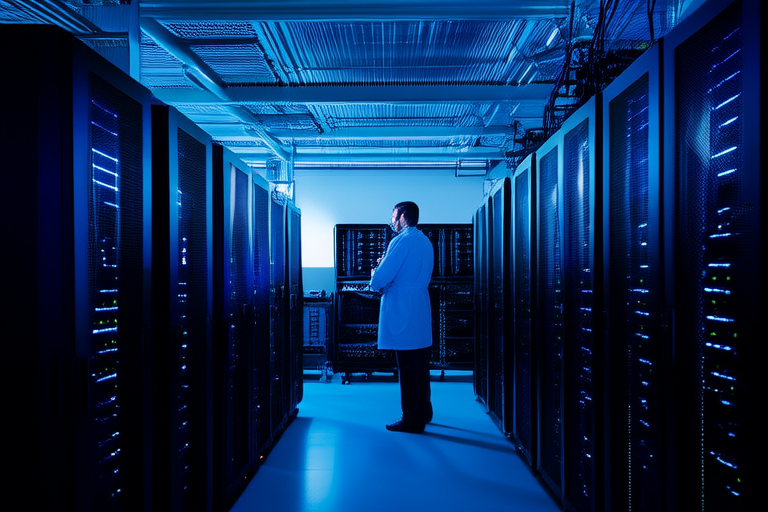“`html
The Intersection of Cloud Computing and Edge Computing: Synergies for the Future
Introduction
Cloud computing and edge computing are two transformative technologies that have significantly impacted the digital landscape. Cloud computing refers to the delivery of computing services—such as servers, storage, databases, networking, software, analytics, and intelligence—over the internet (“the cloud”). Edge computing, on the other hand, involves processing data closer to the source of data generation, thereby reducing latency and enhancing real-time processing capabilities.
The intersection of these two technologies is crucial for the future of technology. As the world becomes increasingly interconnected through the Internet of Things (IoT), the demand for real-time processing and efficient data management has grown exponentially. This article explores the synergies between cloud computing and edge computing, highlighting their combined potential to revolutionize industries and enhance user experiences.
Understanding Cloud Computing
Definition and Key Components
Cloud computing encompasses Infrastructure as a Service (IaaS), Platform as a Service (PaaS), and Software as a Service (SaaS). IaaS provides virtualized computing resources over the internet, allowing businesses to rent computing power, storage, and network components. PaaS offers a platform allowing customers to develop, run, and manage applications without the complexity of building and maintaining the infrastructure typically associated with developing and deploying an application. SaaS delivers software applications over the internet, eliminating the need for organizations to install and run applications on their own computers.
Benefits of Cloud Computing
One of the primary advantages of cloud computing is its scalability. Businesses can easily scale up or down based on their needs, ensuring optimal resource utilization. Additionally, cloud computing is highly cost-effective, as it eliminates the need for expensive on-premises hardware and maintenance. Accessibility is another significant benefit, as users can access cloud-based applications and data from any location with an internet connection.
Common Use Cases and Industries
Cloud computing is widely used across various industries. In healthcare, cloud platforms enable secure storage and sharing of patient records, facilitating remote consultations and telemedicine. Financial institutions leverage cloud computing for fraud detection, risk analysis, and customer relationship management. Retailers use cloud services to optimize inventory management, personalize shopping experiences, and streamline supply chain operations.
Understanding Edge Computing
Definition and Role
Edge computing processes data closer to the source of data generation, reducing the time required for data transmission to central servers. This proximity minimizes latency, making edge computing ideal for applications requiring real-time processing, such as autonomous vehicles, smart grids, and industrial automation.
Advantages of Edge Computing
Edge computing offers several advantages, including reduced bandwidth usage, improved privacy, and enhanced reliability. By processing data locally, edge computing reduces the amount of data transmitted over networks, conserving bandwidth. Additionally, processing data at the edge enhances privacy, as sensitive information does not need to be sent to centralized servers. This decentralized approach also improves system reliability, as failures in one part of the network do not necessarily affect the entire system.
Industries Benefiting from Edge Computing
Edge computing finds applications in various sectors. In the automotive industry, edge computing enables real-time decision-making in autonomous vehicles, ensuring passenger safety. In the energy sector, smart grids utilize edge computing to monitor and optimize energy distribution, enhancing efficiency and sustainability. Manufacturing plants employ edge computing to predict equipment failures, enabling proactive maintenance and reducing downtime.
The Intersection of Cloud and Edge Computing
Complementary Roles
Cloud and edge computing complement each other, offering a powerful combination that addresses the limitations of standalone solutions. While cloud computing excels in handling large-scale data processing and analytics, edge computing excels in real-time data processing and decision-making. Together, they form a hybrid system that optimizes performance, scalability, and cost-efficiency.
Architecture of Hybrid Systems
A typical hybrid system integrates cloud and edge computing by distributing tasks between the two environments. Edge devices process data locally, performing initial filtering and analysis. The processed data is then sent to the cloud for more complex computations, storage, and long-term analytics. This architecture ensures that critical tasks are executed promptly while leveraging the cloud’s extensive resources for non-urgent tasks.
Beneficial Areas
The synergies between cloud and edge computing are most beneficial in industries requiring real-time data processing and decision-making. For example, in smart cities, edge computing can handle traffic management and environmental monitoring in real-time, while the cloud processes historical data to identify trends and optimize city planning. In healthcare, edge computing can support remote patient monitoring and emergency response systems, while the cloud manages patient records and long-term health analytics.
Real-World Applications
Case Studies
Several companies have successfully integrated cloud and edge computing to enhance their operations. One notable example is General Electric, which uses edge computing to monitor industrial equipment in real-time, predicting maintenance needs and optimizing production schedules. The company leverages cloud computing to store and analyze vast amounts of historical data, providing valuable insights into equipment performance and reliability.
Potential Future Applications
The future holds immense potential for innovations enabled by the synergy of cloud and edge computing. Autonomous vehicles will rely heavily on edge computing for real-time decision-making, while cloud computing will manage long-term data analytics and fleet management. In the retail sector, augmented reality shopping experiences will utilize edge computing for personalized recommendations, while cloud computing will handle inventory management and customer data analytics.
Challenges and Considerations
Implementing hybrid solutions presents several challenges, including data consistency, security, and interoperability. Ensuring data consistency across edge and cloud environments requires robust synchronization mechanisms. Security remains a critical concern, as sensitive data must be protected both at the edge and in the cloud. Interoperability between different hardware and software components is essential for seamless integration and optimal performance.
Benefits and Challenges
Primary Benefits
The primary benefits of combining cloud and edge computing include enhanced real-time processing, reduced latency, and improved scalability. By processing data closer to the source, edge computing ensures faster response times, while cloud computing provides the necessary resources for long-term data storage and analytics. This combination optimizes resource utilization, leading to cost savings and improved operational efficiency.
Potential Challenges
Potential challenges include data consistency, security, and interoperability. Data consistency must be maintained across edge and cloud environments to ensure accurate and reliable results. Security concerns arise due to the distributed nature of edge computing, necessitating robust encryption and access control measures. Interoperability between different hardware and software components is crucial for seamless integration and optimal performance.
Importance of Collaboration
Collaboration between cloud providers, hardware manufacturers, and software developers is essential for addressing these challenges and maximizing the potential of hybrid solutions. By working together, stakeholders can develop standardized protocols, enhance security measures, and improve interoperability, paving the way for innovative applications and services.
Conclusion
The intersection of cloud computing and edge computing holds significant promise for the future of technology. By leveraging the strengths of both technologies, businesses can achieve enhanced real-time processing, reduced latency, and improved scalability. As industries continue to embrace these synergies, we can expect groundbreaking innovations and enhanced user experiences. The future looks bright for this technological convergence, and further exploration and innovation in this space are encouraged.
“`


